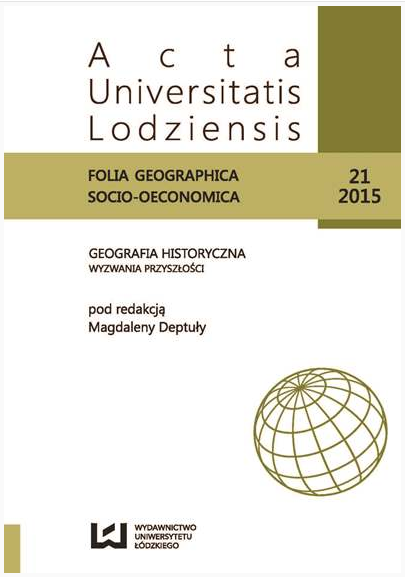Spisy powszechne w Polsce w latach 1921-2011 - określanie czy kreowanie struktury narodowościowej?
Censuses in Poland in the years 1921-2011 - determination or creating of ethnic structure?
Author(s): Marek BarwińskiSubject(s): Geography, Regional studies, Human Geography, Regional Geography, Historical Geography
Published by: Wydawnictwo Uniwersytetu Łódzkiego
Keywords: the national structure of Poland; census; national minorities
Summary/Abstract: This article attempts to answer question on how much the methods of conducting censuses, the formulation of the so-called ”ethnic question” and current political and social conditions can shape their results. The census carried out in Poland over the last 90 years were discussed, paying particular attention to factors that could cause distortion of their results. Censuses in 1921 and 1946 were carried out immediately after the end of armed conflict – in a very dynamic socio-political situation during the post-war migration, not on the entire territory of the country, before the final demarcation of borders, in conditions of very strong nationalist atmosphere and marked reluctance of Polish majority to at least part of national minorities. From the point of view of the state administration the rapid pace of their conduction had justified reasons of political and demographic character, however it did not worked in the case of a reliable determination of the national structure, due to underestimating of the size of national minorities. The census in 1931 was carried out in the realities of a multinational state, strongly conflicted ethnically. On its results influenced both, the change in the method of determining the national structure, direct manipulation and forgery of authorities seeking to underestimation of the number of non-Polish population, as well as the emerging national identity of some residents, especially of eastern regions of the Poland. In 2002, after several years of recess in the studies on ethnic statistics, in the realities of practically mono-ethnic state, the clearly method of question of nationality and direct method of obtaining statistical data were adopted. However the social conditions, and particularly the negative experience of part of the minority against declaring non-Polish nationality, has contributed to an underestimation of its results, what combined with excessive estimates of the then Polish ethnic structure, caused numerous complaints concerning the accuracy of the census. In turn, in 2011, the census was carried out by a very diverse and completely different from all previous ones method. The introduced changes were mainly influenced by the suggestions and requests of national organizations, under what is known as ”political correctness” in the country in which minorities did not play a significant role in demographic or political aspect. The formulation of a questions about nationality, and especially the computation or rather estimation of the ethnic structure – for the first time – clearly overrated, not underrated its results and reduced their credibility. In terms of questions about nationality, none of these censuses were fully reliable, and for quantifying the Polish ethnic structure, the greater importance had rather different statistical methods applied during censuses, and the current state policy against non-Polish population, rather than the subjective feeling of national identity of individual citizens.
Journal: Acta Universitatis Lodziensis. Folia Geographica Socio-Oeconomica
- Issue Year: 21/2015
- Issue No: 3
- Page Range: 53-72
- Page Count: 20
- Language: Polish

